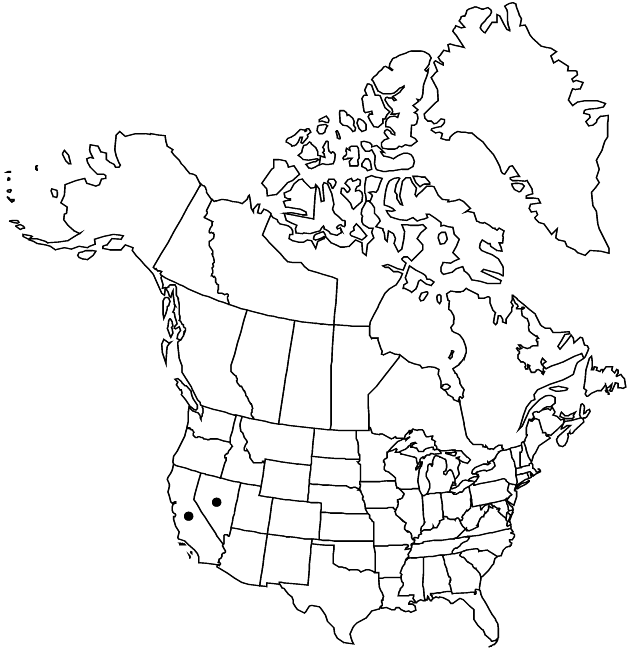Chaenactis alpigena
Contr. Dudley Herb. 4: 319, plate 12, fig. a. 1955.
Perennials, 2–7 cm (cespitose or ± matted); proximal indument thinning with age, grayish to yellowish, lanuginose (sometimes glabrescent). Stems mostly 5–15+, erect to prostrate. Leaves basal, 1–2.5 (–3.5) cm; largest blades linear or broadly elliptic to slightly obovate, ± plane or 3-dimensional, (0–) 1–2-pinnately or -subpalmately lobed; primary lobes 2–7 pairs, ± congested, ultimate lobes ± plane to involute and twisted. Heads 1 per stem. Peduncles mostly prostrate, (0.5–) 2–7 (–10) cm. Involucres obconic to ± cylindric. Phyllaries: longest 9–14 mm; outer ± lanuginose, not stipitate-glandular, apices erect, ± rigid. Corollas 5.5–8 mm. Cypselae 5–8 mm (eglandular); pappi: longest scales 5–8 mm (lengths 0.9–1 times corollas).
Phenology: Flowering Jul–Sep.
Habitat: Open, loose, subalpine to alpine granitic sand, gravel, scree
Elevation: 2200–3900 m
Discussion
Chaenactis alpigena is known from the central and southern Sierra Nevada and adjacent northern White Mountains. It is sometimes cultivated in rock gardens and may be found beyond its native range. It appears to be sister to C. thompsonii and/or C. evermannii.
Chaenactis alpigena shows clinal variation; northward the leaves tend to be ± plane, (0–)1-subpalmately lobed, lobes 2–5 pairs, ± plane; southward the leaves tend to be ± 3-dimensional, 1–2-pinnately lobed, primary lobes 4–7 pairs, ultimate lobes ± involute, twisted. Leaves of intermediate forms tend to be ± plane, 1-pinnately lobed, lobes mostly 4–5 pairs, ± plane. The variation is gradual and does not support recognition of infraspecific taxa. Throughout its range, occasional plants of C. alpigena are green and glabrate.
Selected References
None.
Lower Taxa
"longest" is not a number.
